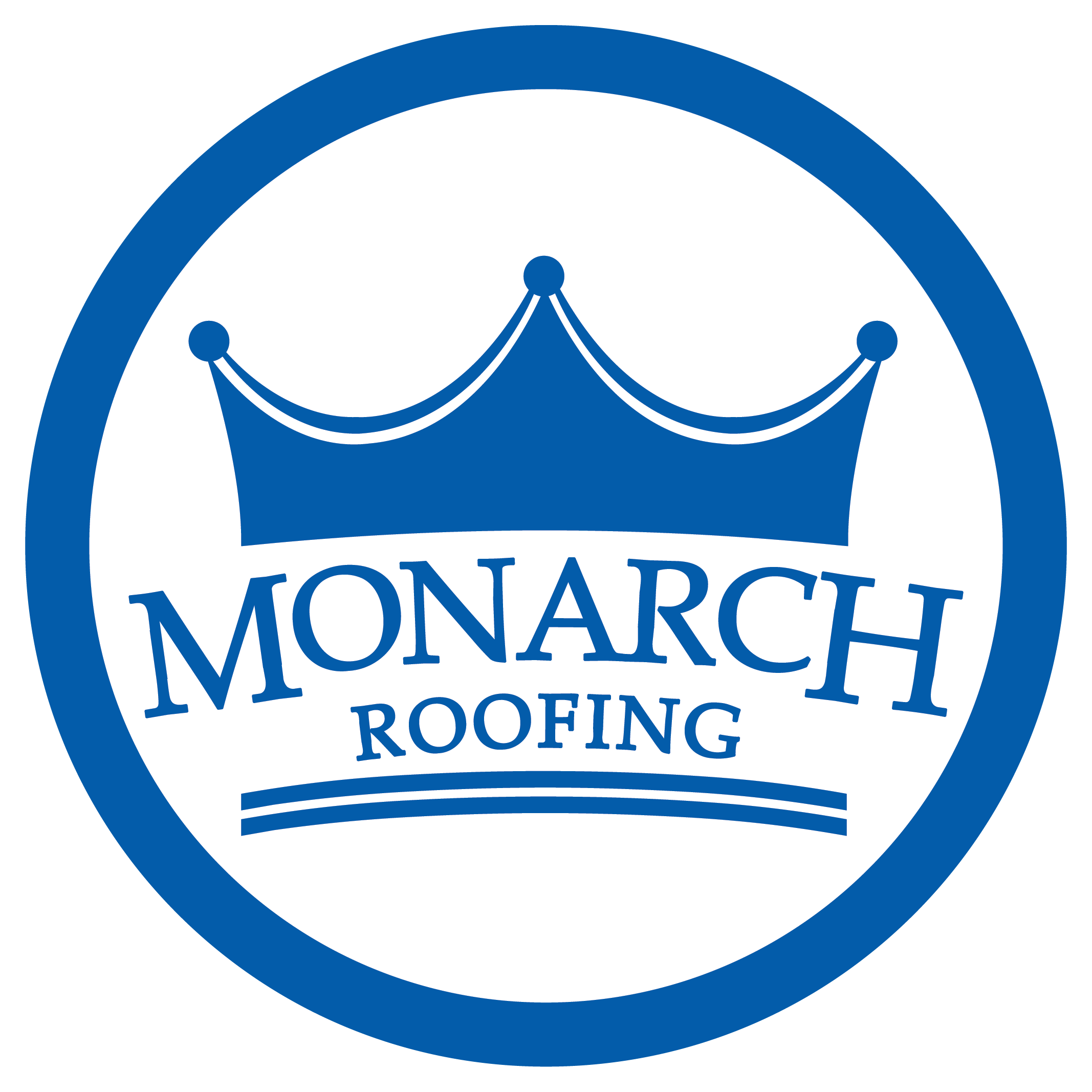A well-maintained shingle roof is crucial for protecting your home from the elements, and a comprehensive inspection is a key component of its upkeep and can put off the need for a roof replacement. However, many homeowners are unsure what to look for during a roof inspection, and some may not even realize the importance of regular inspections.
Get your roof inspected by a professional if it’s been a while.
Of course, if you feel up to it, you can get up there and check things out first.
In this blog post, we provide a comprehensive shingle roof inspection checklist covering essential elements to examine, interior roof inspection tips, as well as the pros and cons of professional versus DIY roof inspections. By the end, you’ll have a better understanding of how to maintain and extend the life of your shingle roof.
To ensure you cover all bases during a shingle roof inspection, we’ve divided our checklist into several sections, each focusing on specific aspects of the roof. We’ll also provide valuable tips for conducting your own inspections and when it’s best to call a professional. So let’s get started and learn how to keep your roof in top shape.
Short Summary
- A thorough shingle roof inspection checklist includes an assessment of the roof’s condition including flashing, seals, gutters, & downspouts.
- There are benefits to both Professional & DIY inspections, though professional inspections are typically more thorough.
- We provide preventative maintenance tips such as addressing damaged/missing shingles & cleaning gutters – which can greatly extend the life of your roof.
- An interior roof inspection that checks for water stains/mold, evaluates structural integrity & ensures proper ventilation must be a part of the inspection.
Essential Items on a Shingle Roof Inspection Checklist
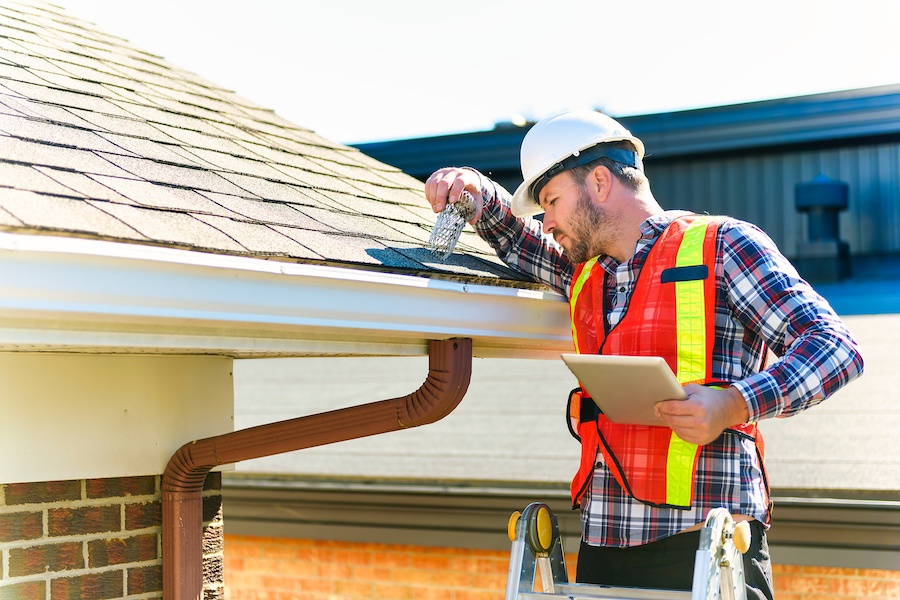
Before diving into the specifics, it’s essential to have a general understanding of what to look for during a shingle roof inspection. The three primary areas to examine are the shingle condition, flashing and seals, and gutters and downspouts.
Let’s explore each of these aspects in detail.
Examining Shingle Condition
Shingles are the first line of defense against the elements, and their condition plays a crucial role in the overall health of your roof. Damaged, broken, or loose shingles can allow water to seep in, causing further damage to your home. To prevent this, it’s essential to inspect your roof for signs of splitting, curling, blistering, or loose shingles. Soft shingles are particularly concerning, as they may indicate a more advanced stage of decay.
During your inspection, pay close attention to the ridges of the roof, as these areas are often the most susceptible to damage. In addition, check for signs of sagging or unevenness in the roof’s surface, which could indicate structural problems. If you notice any of these issues, it’s best to address them immediately to prevent further damage and costly repairs.
Inspecting Flashing and Seals
Flashing is a type of metal sheathing used to seal objects such as chimneys, windows, and vents to the roof, preventing water and pests from entering your home. Over time, flashing and vent boots can rust or deteriorate, leading to leaks and other issues. During your inspection, examine the metal and vinyl flashing for separation and seal any areas with caulk if needed.
Damaged flashing not only poses a risk of water leakage, but also invites pest infestations. If you discover any issues with your flashing and seals, it’s essential to address them promptly by replacing or resealing them as necessary. This will help maintain the integrity of your roof and protect your home from potential damage.
Assessing Gutters and Downspouts
Gutters and downspouts play a vital role in directing water away from your home’s walls, preventing damage to the foundation and landscaping. A damaged gutter can lead to a variety of issues, such as cracks, peeling paint, and water damage. Inspect the gutters for any signs of these problems, and pay special attention to areas where the gutters are detaching from the house or sagging.
Clogged gutters can also cause water to overflow, potentially damaging your home’s siding and leading to costly repairs. To prevent this, it’s essential to regularly clean your gutters and remove any debris that may be obstructing the flow of water.
By keeping your gutters and downspouts in good condition, you can help protect your home and extend the life of your roof.
Interior Roof Inspection Tips

While inspecting the exterior of your roof is essential, it’s equally important to examine the interior for signs of damage. Areas to focus on include checking for water stains and mold, evaluating structural integrity, and ensuring proper attic ventilation.
Let’s delve deeper into each of these aspects.
Checking for Water Stains and Mold
Water stains and mold are telltale signs of a potential roof leak. They can manifest as water spots, stains, and mildew growth on the roof, walls, and ceilings. Inspect these areas thoroughly, as well as any blocked gutters or sagging sections of the roof that could indicate a leak.
If you discover any signs of water damage or mold, it’s crucial to address the issue as soon as possible to prevent further damage to your home. This may involve repairing or replacing damaged shingles, flashing, or gutters, as well as treating any mold or mildew growth to protect your home’s structural integrity and your family’s health.
Evaluating Structural Integrity
A comprehensive roof inspection also involves assessing the structural integrity of your home. Signs of structural damage can include sticking doors and windows, cracks in walls, foundation, stairs, brick or stonework, and mortar joints, as well as bowing or bulging walls. Water infiltration can exacerbate these issues, leading to further damage and costly repairs.
During your inspection, be sure to examine the roof sheathing for signs of damage or deterioration. If you notice any issues, it’s important to address them promptly to maintain the structural integrity of your home and prevent more severe problems down the line.
Ensuring Proper Attic Ventilation
Proper attic ventilation is crucial for maintaining the comfort and safety of your home. Inadequate ventilation can lead to a host of issues, including mold and mildew accumulation, discoloration in the attic, sagging roofs, loose shingles, and even problems with heating and cooling systems.
To ensure proper attic ventilation, inspect for any visible signs of moisture on plywood, cracked or curling shingles, and peeling paint. Additionally, check for any obstructions in the attic’s vents or soffits, as these can hinder proper airflow. Address any issues you discover promptly to maintain your home’s overall health and prevent costly damage.
Professional vs. DIY Roof Inspections
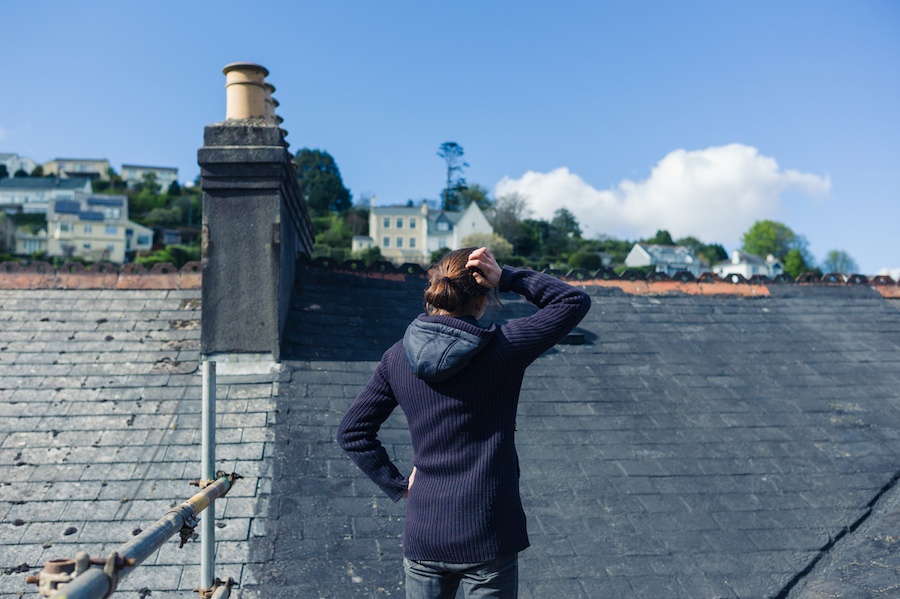
Now that we’ve covered the essentials of a comprehensive shingle roof inspection, it’s time to discuss the pros and cons of professional versus DIY roof inspections. While both options have their benefits, there are certain situations where one might be more appropriate than the other.
Let’s explore when to hire a professional and tips for conducting your own inspection.
When to Hire a Professional
There are several advantages to hiring a professional roof inspector, including their experience and proficiency. Additionally, professional roof inspections can identify unseen damage, evaluate the remaining lifespan of your roof, and assist in handling insurance claims. It’s recommended to arrange a professional roof inspection at least once annually to avoid expensive issues.
If professional roof repairs are required, it’s advised to contact a local roofing company and obtain at least two bids for repair work. This ensures you receive the best value and quality of work for your investment. In some cases, a handyman may be suitable for minor roof repairs, but for more extensive or complex issues, it’s best to rely on the expertise of a professional roofing company.
Tips for DIY Inspections
While professional roof inspections offer many benefits, DIY inspections can be a cost-effective alternative for homeowners who are comfortable with basic roof maintenance tasks. To conduct a successful DIY roof inspection, start by walking around your home and observing the roof from the outside. Inspect the gutters for any signs of water damage and keep an eye out for any visible signs of damage or deterioration on the roof sheathing.
If you detect any signs of water damage, take appropriate action to rectify the situation. This may include resealing flashing, replacing damaged shingles, or clearing debris from gutters. Remember, safety is paramount when conducting a DIY roof inspection, so ensure you have the proper equipment and take the necessary precautions to prevent accidents.
Preventative Maintenance and Repairs
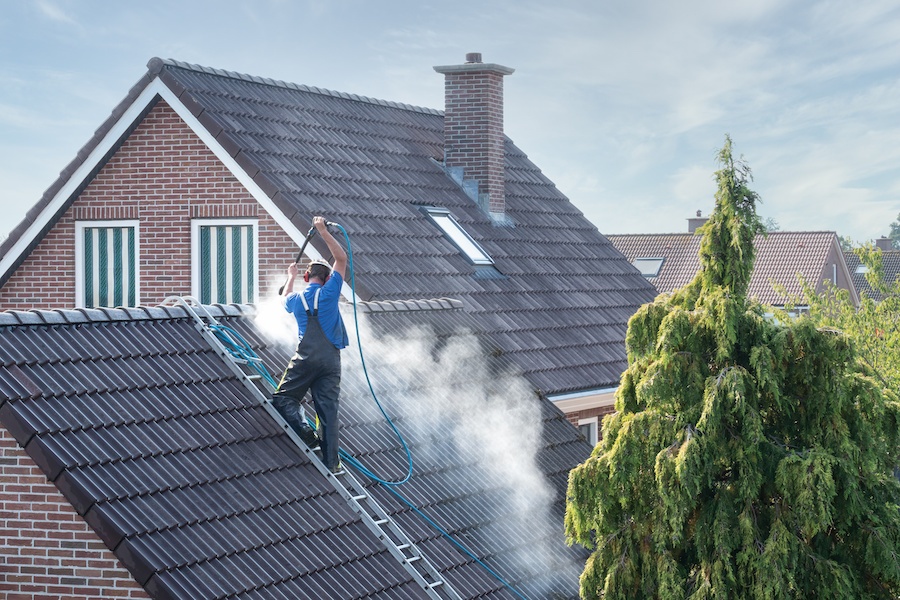
In addition to regular inspections, preventative maintenance and repairs are crucial for maintaining the health of your shingle roof. This includes addressing damaged or missing shingles, cleaning gutters and removing debris.
Let’s take a closer look at each of these aspects.
Addressing Damaged or Missing Shingles
Damaged or missing shingles can lead to a host of issues, including water leaks, mold growth, and structural damage. To prevent these problems, it’s essential to address any damaged or missing shingles as soon as they’re discovered. This may involve reattaching popped nails, replacing loose or broken shingles, or installing new shingles if necessary.
By addressing damaged or missing shingles promptly, you can help maintain the integrity of your roof and protect your home from costly damage. Regular inspections, coupled with timely repairs, will ensure your shingle roof remains in good condition and serves its purpose for years to come.
Cleaning Gutters and Removing Debris
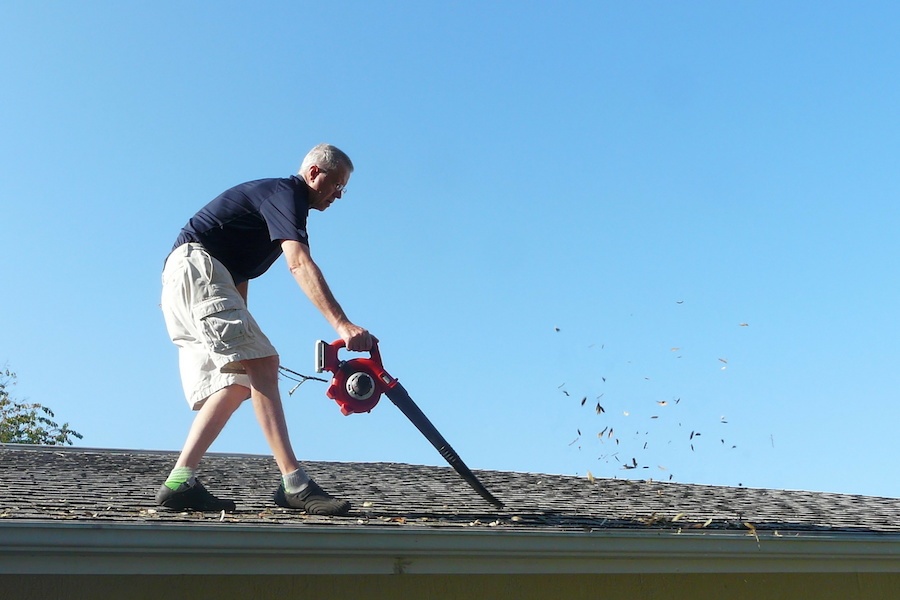
Gutters play a crucial role in directing water away from your home, and keeping them clean and free of debris is an essential part of roof maintenance. To clean your gutters, start by manually removing debris using a scoop or trowel, and place the debris in a bucket for disposal. Once the gutters are clear, flush them with water to ensure proper water flow.
When cleaning your gutters, be sure to wear protective gloves and use a sturdy ladder for safety. Regular gutter cleaning helps prevent water damage, mold growth, and costly repairs, making it an important aspect of preventative roof maintenance.
Summary
In conclusion, regular roof inspections are essential for maintaining the health and longevity of your roof. By focusing on the essential items in our checklist, such as examining shingle condition, inspecting flashing and seals, and assessing gutters and downspouts, you can identify potential issues before they become costly problems. Additionally, don’t forget the importance of interior roof inspections, which can uncover hidden damage and ensure proper attic ventilation.
Whether you choose to conduct your own roof inspections or rely on the expertise of a professional, regular preventative maintenance and repairs will protect your home from the elements and extend the life of your shingle roof. By following the tips and guidelines in this blog post, you’ll be well on your way to a healthy, durable roof that keeps your home safe and secure for years to come.
Frequently Asked Questions
How do you inspect asphalt shingles?
In order to properly inspect asphalt shingles, it is important to first look for signs of algae, moss and piles of leaves. You should then check for buckled or curled shingles, damaged, missing or old shingles and inspect the roof up close.
Finally, you should investigate your attic for any further evidence of damage.
What should I look for in a shingle roof?
When considering an asphalt shingle roof for your home, look for a product that offers superior performance in terms of wind and rain protection, is available in a variety of colors and styles to complement the exterior of your home, and comes with a long-term warranty from a trusted manufacturer. Additionally, make sure the contractor you choose is experienced and properly insured.
Finally, take the time to research your options so that you know exactly what you are getting. This will help ensure that you get the right asphalt shingle roof for your needs.
How do you know if your roof shingles are bad?
It is important to regularly check your roof shingles for signs of decay, such as splitting, cracking, chipping, peeling, curling, or blistering. If any of these signs are present, it’s a good indication that the roof shingles are bad and need to be replaced.
Do roof inspectors check if shingles are loose?
Yes, roof inspectors will check to see if shingles are loose as part of their inspection. They will look for signs of curling or missing shingles and any stains, moss, or rust on the material of your roof.
Inspectors will also check for any signs of water damage, such as water stains on the ceiling or walls, or any signs of mold or mildew.
What should I check on my roof?
It is important to inspect your roof regularly to ensure that it remains in good condition. Be sure to check for any signs of damage, such as cracked or missing shingles, corrosion of flashings, broken tiles, and water leaks.
Additionally, check for signs of damage caused by pests such as insect infestations], as well as any other structural damage.
